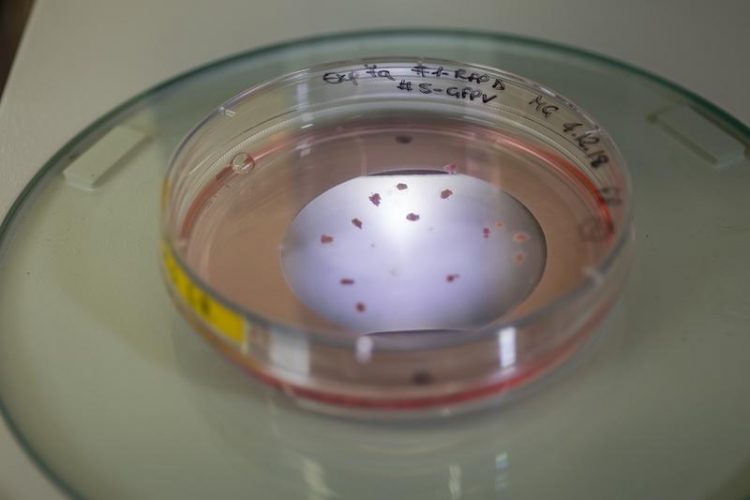Lab grown ‘brains’ successfully model disease

Brain organoids look like pinheads in the petri dish Axel Griesch for Max Planck Society
Much insight into the brain’s function has been gained from scientists working with animal models. However, animal models have their limitations since animal brains undergo a very different development process to humans brains.
Some research has been carried out on the human brain, but it has relied on post-mortem donations and cultured cells. Since human brain tissue is difficult to obtain and animal models can only model the human brain to a limited extent, there was a crucial gap in brain research and a novel method to model human disease was highly sought after.
The Cappello research group at the Max Planck Institute of Psychiatry in a highly collaborative work, particularly with the laboratory of Barbara Treutlein from the Max Planck Institute for Evolutionary Anthropology in Leipzig, have employed brain organoids to model developmental brain malfunctions.
These brain organoids have revolutionized neuroscience as they can recapitulate the way neurons differentiate in development to a remarkably high degree. When the human brain develops, new cells grow and aggregate in a very specific order. – The results of the study were shortly published in the highly prestigious journal Nature Medicine.
In heterotopia, the outermost layer of the brain, the cortex, is malformed. Malformations of the human cortex represent a major cause of disability. Heterotopia is an inheritable disorder where the migration of neurons is disturbed during development. In particular the scientists were able to find a full new set of molecular signatures that are unique in the diseased cells, giving them now potential ideas of how they can identify possible targets and strategies to develop therapy for patients.
The brain organoids in this study were grown from skin cell biopsies donated by patients. Silvia Cappello, who leads the work, explains: “We reprogrammed the skin cells into induced pluripotent stem cells. These pluripotent stem cells were then used to generate brain cells, which could be differentiated into many different types of brain cells.”
The different types of brain cells and their interactions can then be studied behaving in a way they would in an actual human brain. Cappello adds: “Brain organoids give us a much clearer picture of how brain cells are functioning and can accurately model human neurological diseases.”
The ability to model human brain development in vitro holds tremendous translational value. Brain organoids have already helped scientists to better understand the Zika virus, Alzheimer’s disease and autism. As the brain organoid is grown from the cells of an individual, it allows scientists to study exactly what is happening in individual patients.
Cappello concludes: “Validating brain organoids represents a hugely important step in helping us to understand developmental and neurological disorders and they hold great promise for discovering new treatments.”
Silvia Cappello
0049 89 30622-253
silvia_cappello@psych.mpg.de
Altered neuronal migratory trajectories in human cerebral organoids
derived from individuals with neuronal heterotopia
Nature medicine, 2019
https://doi.org/10.1038/s41591-019-0371-0
https://www.psych.mpg.de/2453853/news_publication_12824988?c=1496476
Media Contact
All latest news from the category: Health and Medicine
This subject area encompasses research and studies in the field of human medicine.
Among the wide-ranging list of topics covered here are anesthesiology, anatomy, surgery, human genetics, hygiene and environmental medicine, internal medicine, neurology, pharmacology, physiology, urology and dental medicine.
Newest articles

NASA: Mystery of life’s handedness deepens
The mystery of why life uses molecules with specific orientations has deepened with a NASA-funded discovery that RNA — a key molecule thought to have potentially held the instructions for…

What are the effects of historic lithium mining on water quality?
Study reveals low levels of common contaminants but high levels of other elements in waters associated with an abandoned lithium mine. Lithium ore and mining waste from a historic lithium…

Quantum-inspired design boosts efficiency of heat-to-electricity conversion
Rice engineers take unconventional route to improving thermophotovoltaic systems. Researchers at Rice University have found a new way to improve a key element of thermophotovoltaic (TPV) systems, which convert heat…



